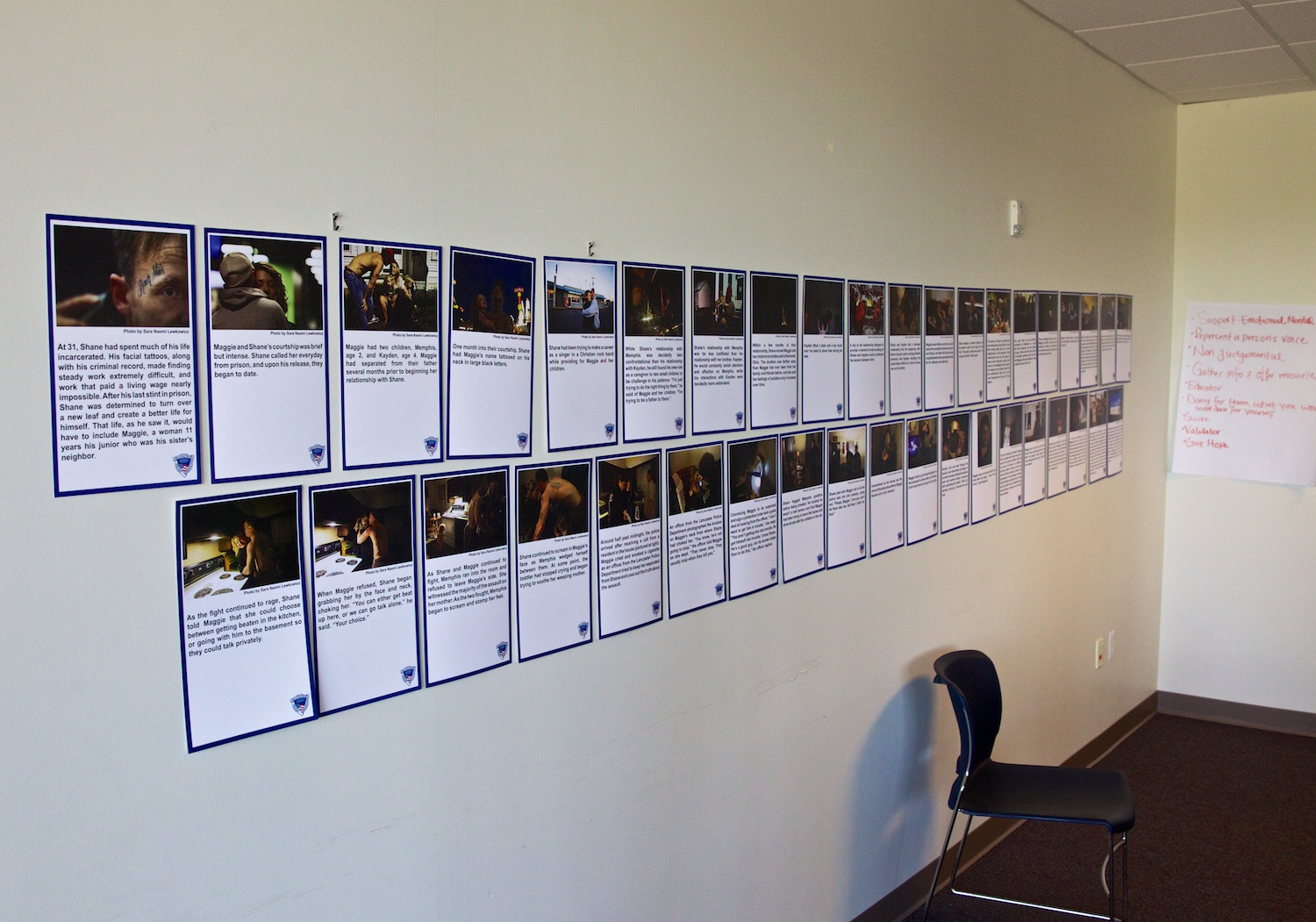During my 23 years as a daily photojournalist, I've seen my work do good in small ways, but nothing I've done comes anywhere close to Sara Naomi Lewkowicz's recent work on domestic violence.
As a daily newspaper photographer, we do a lot of work that has little or no impact on the community. We often shoot assignments that are an attempt to illustrate process stories about government bureaucracy. They are stories that aren't obviously visual. They are assignments that need to be done and we do them the best we can and move on the next.
I was shooting just this type of assignment yesterday. It was essentially two city bureaucrats giving us a tour of a half-empty building. In that building we came to a room that was used by the police department to train victim advocates. These are people that help victims of domestic violence through the process of the justice and social agency system.
In the classroom hung 39 photographs. They were printed with full captions, a byline, and the Beaverton Police Department logo on the lower corner of the page. It was obvious someone put forth a lot of effort and expense to create the display.
Sara Lewkowicz's 39 photos hang in a class room for training victim advocates.
I realized someone at the Victims Advocate Training Academy responsible for teaching volunteers decided that the most important visual teaching aid they could use in their classroom was photojournalism. It isn't just any photojournalism, it's a body of work that showed in great detail the legal, physical and emotional story of domestic violence.
This forensic evidence I found hanging on the wall was tangible, indisputable proof, that photojournalism could help people. In this specific case, it helps volunteers that go with police to domestic violence calls better understand what the victims are going through. Sara's photos help victims of domestic abuse be better understood and better served during a very difficult time. I imagine every volunteer having Sara's images in their mind as they roll up on a scene.
As important as it is for those volunteers to see this work, it's just as important to me to see work like this doing good and helping people. Photojournalists don't get the opportunity often. It makes meaningless assignments more bearable knowing that someday we may get the opportunity ourselves to once again have our work make a positive impact. We want to know the possibility still exists.
